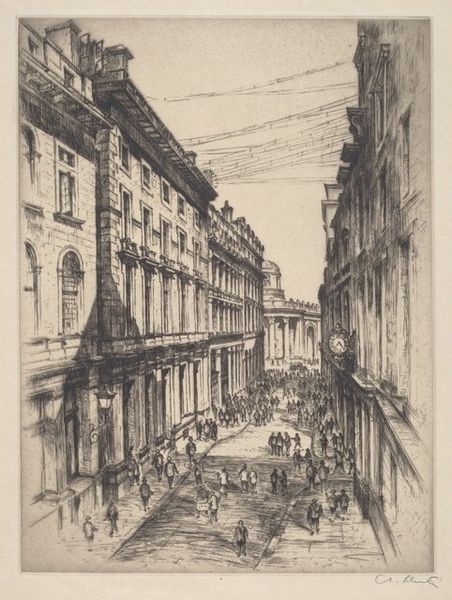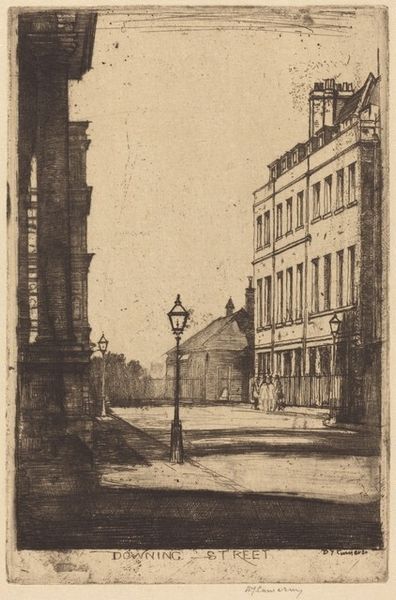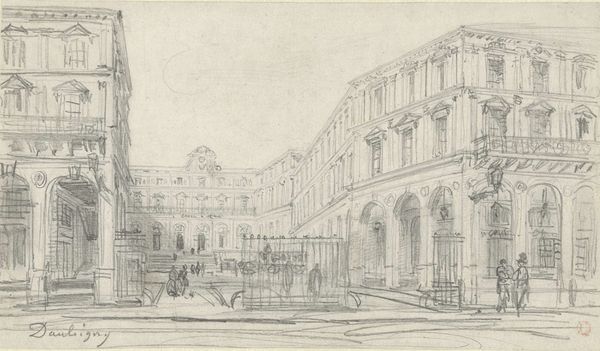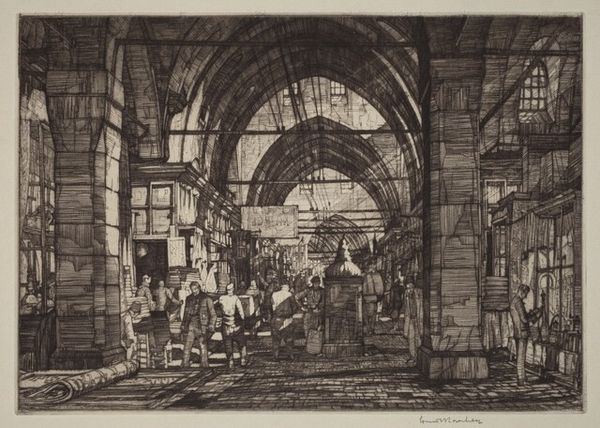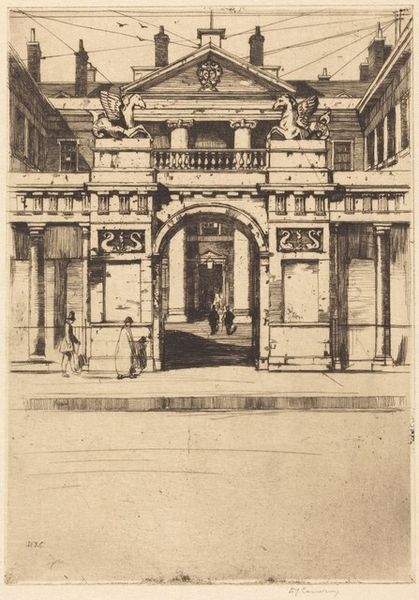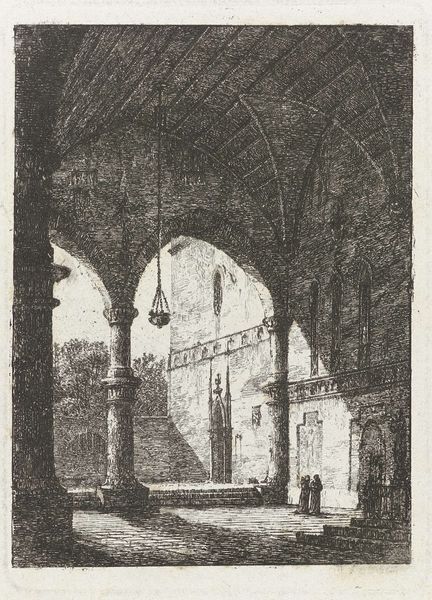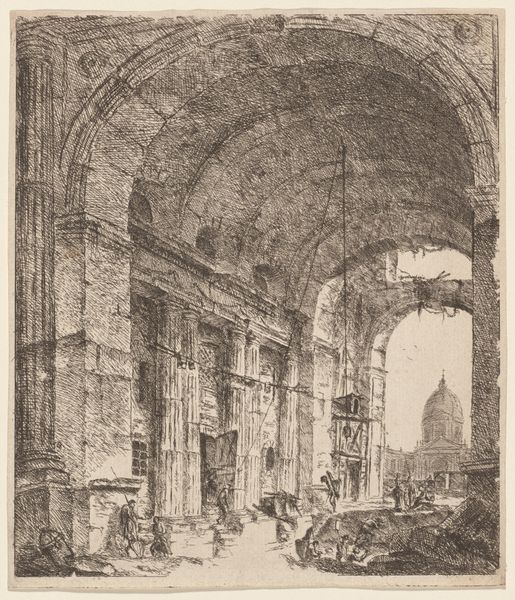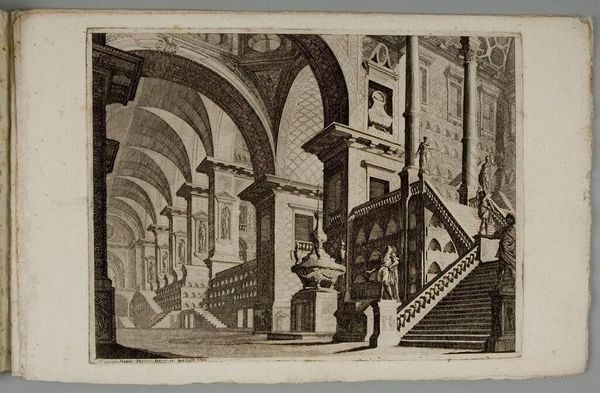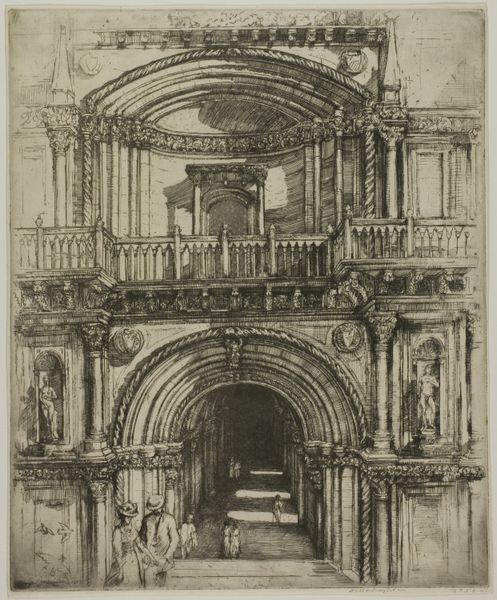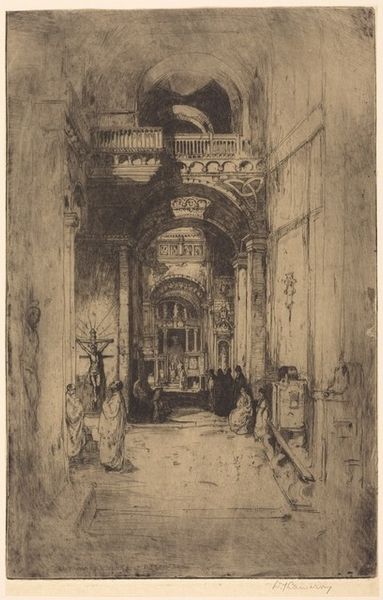
print, etching, architecture
# print
#
etching
#
geometric
#
cityscape
#
modernism
#
architecture
#
realism
Dimensions: plate: 40.5 × 34.7 cm (15 15/16 × 13 11/16 in.)
Copyright: National Gallery of Art: CC0 1.0
This is Henry Rushbury's "Governor's Court, Bank of England," an etching. Rushbury, who lived through both World Wars, produced artwork that often focused on architecture. Here we see the stoic architecture of the Bank of England. Consider the weight of the institution and the history it represents. Rushbury made this piece during a time when the Bank of England was central to global finance, playing a key role in managing Britain's economic affairs and international trade. What stories do these walls conceal? Rushbury skillfully uses light and shadow to convey the Bank’s imposing presence and the air of secrecy that surrounds it. This etching is more than just a representation of a building. It embodies the narratives of power, capitalism, and colonialism that are deeply embedded within the Bank’s foundations. It invites us to reflect on who is included and excluded in the spaces of economic power.
Comments
No comments
Be the first to comment and join the conversation on the ultimate creative platform.
